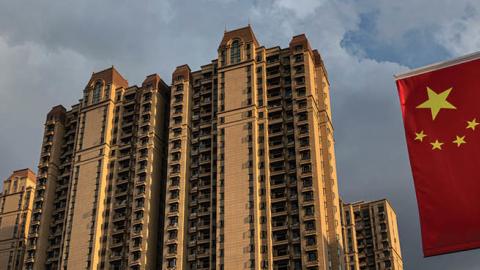Evergrande is one of the top-two real estate developers in a still highly fragmented Chinese sector. Its main strategy is to achieve ever-increasing scale (rather than profitability) in order to move ahead of and crowd out commercial competitors. It has also amassed the largest land reserves of all Chinese developers, which were financed through massive borrowings. By 2018, Evergrande held 822 pieces of undeveloped land in 228 cities, with a planned gross floor area of 3.28 billion square feet of new homes—the equivalent of 10 percent of Germany’s entire housing stock. It paid $75 billion just for this undeveloped land.
Although Evergrande’s market share is only around 4 percent, its borrowings stand out. Its current balance sheet liabilities amount to an estimated 2 percent of China’s gross domestic product (GDP), while its off-balance-sheet liabilities could be another 1 percent of China’s GDP. This makes Evergrande the most indebted property developer in the world.
Burdened by this debt, struggling to meet its debt interest and repayment obligations, and viable only if property asset values and sales continue to increase, Evergrande faces possible financial collapse—an event bound to have flow-on effects for the Chinese economy. However, the unusually high global interest in Evergrande has arisen because its woes are increasingly seen as symptomatic of those faced by the broader Chinese economy, which is struggling with enormous levels of indebtedness and overreliance on the real estate sector.
Debt held by nonfinancial institutions in China increased from about 115 percent of GDP in 2010 to around 160 percent of GDP currently. This is the most rapid and largest increase in a 10-year period for any major economy and makes the level of debt held by Chinese nonfinancial institutions one of the highest in the world. The real estate sector accounts for around 15 percent of GDP, while property services account for another 14 percent—the highest in any developing economy. The share of the real estate sector as a proportion of GDP was only about 4 percent in 1997 and 9 percent in 2008. Since 2008, up to a third of all domestic fixed investment has gone into real estate, and up to half of total national debt is linked to the real estate sector.
















